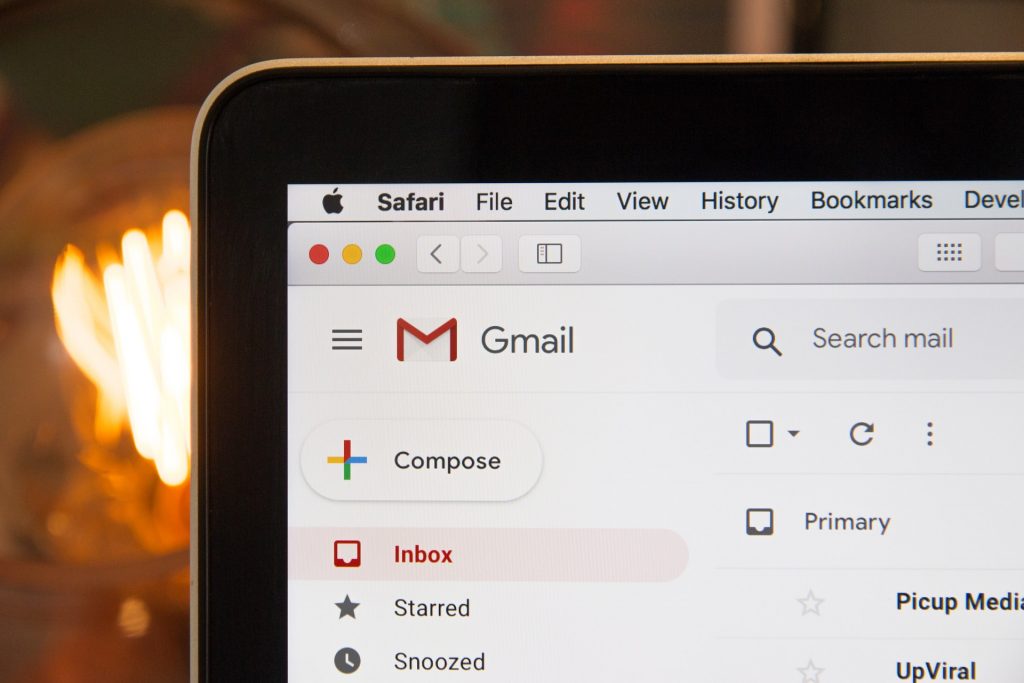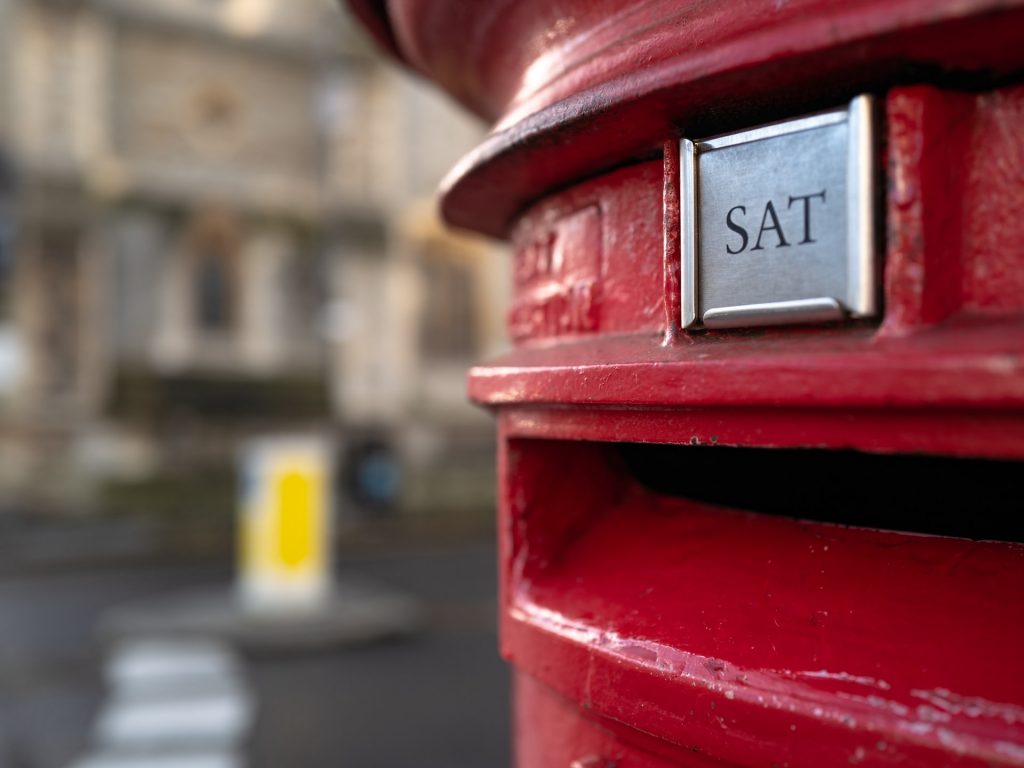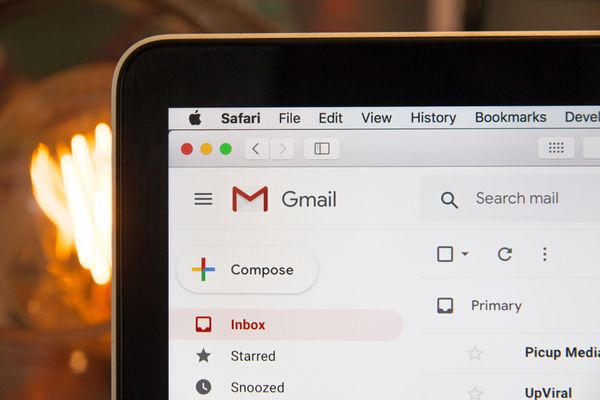The Humble Email Newsletter… Should You Be Doing It (Better)?
…and off it goes. You’ve just sent the weekly/monthly/when-you-can-ly email newsletter. And for many businesses creating an email newsletter might look something like this…
- You grab a bunch of stuff from social media
- Find some eye catching images
- Check for spelling mis-steaks
- You check that it ‘reads well’
- Then hit 'send'
What you might not do…
- Write a killer subject line (always overlooked or an afterthought, but it’s crucial in getting your email opened)
- Create a humdinger of a headline that draws in your audience from the go-get
- Say something new or interesting
- Be relevant to your audience
- Have clear calls to action and goals
But there is much more potential for the humble email.
In this article:
-
Email Newsletters – D@mn and Blast Them
-
Understanding the Email Newsletter
-
‘My Open Rate is Low…’
-
Spam Filters
-
The Subject Line
-
But What Does Good Even Look Like?
-
How to Better use Types of Email
-
Using Triggers in Your Email Messaging
-
Some Final Thoughts
Your Email Newsletter – D@mn and Blast It
If you’re a small business (actually, most businesses) you’re probably using the batch and blast approach. That is, you create a newsletter by collating existing content from your social media campaigns, your latest blog post, your website services… … then you’re putting it all into an email platform and pushing the send button. And away we go. Doing email marketing in this way is certainly better than not doing it at all. And it could be because of time or staff constraints that your emails are done the way they are. It’s ok though. With any marketing it’s better to do SOMETHING than do nothing or sit around discussing doing it perfectly and never getting it off the ground. Remember “perfection kills progression”. 
Understanding the Email Newsletter
Many email campaigns are effectively solicited digital junk mail. If you’re batching and blasting a person has given you their permission to send them something, but they’re not sure what it is that will be coming through each time. Think about how many times you’ve received emails that are totally irrelevant just because you signed up in exchange for a 10% discount. People might like your company, but that doesn’t mean they’re interested in everything you send. Even if you have a subscription hub, where people can choose what type of email they receive (for example do they want offers only, or do they only want a monthly email), but the actual content will be a surprise. So, with every send it’s worth remembering that the quickest way to leave a newsletter unclicked or get an unsubscribe is to bore people. Your customers should know that by opening your email over the next one in their full inbox, it’s been worth their time and effort. And it’s especially important at the start of the relationship with your company.
“if you proceed to try to slay them with a hard sell, they’re likely to unsubscribe immediately. The better approach is to nurture the lead.” Neil Patel
And if you’re not doing even a batch and blast then you really are missing out on the low hanging fruit from the tree of business success.
Think about these:
- Email is still one of the cheapest, most engaging forms of marketing you can do. The ROI (return on investment) is huge. As an average figure, for every £1 you spend you’ll get around £40 back.
- It’s pretty darn easy to get started.
- You can get highly automated, creating all sorts of email templates and triggers, really personalising the content. And once you’re set up it will run smoothly.
Also read: Email. It’s One of Marketing’s Most Powerful Tools
‘My Open Rate is Low…’
Yikes. And it may be true, but think about the context too. An open rate mostly comes down to:
- Is the email being delivered properly (or even at all)?
- Is the subject line good enough?
Spam Filters
A few things can affect the delivery of an email, but it’s mostly down to spam filters. Spam filters are designed to read people’s minds, anticipating what emails you will open and those you don’t want. And it’s automated. So, spam filters look for certain words, phrases, the email code, the image to word ratio and other stuff that spammers might typically include. If your newsletter contains these ‘red flags’ it might get delivered to your customers junk folder where it might sit unnoticed. If you’re sending for the first time, it’s possible you can end up in the junk folder while your customers spam filter gets used to you (remember the ‘add us to your contacts’ messages at the top of some emails? It’s designed to help the email get straight into the inbox in future). Then there’s the sender reputation. We’re using the term generally here but when you deliver newsletter or email messages, your reputation counts. Filters score your reputation (usually out of 100) and the higher the score, the more reputable your emails are considered. They will end up where you want them in the customer’s inbox. But it also depends on how you format the email too. A good reputation will carry you so far, but if when you create an individual email it’s got spam-like elements, it can easily end up in the junk folder. If your sends are both low in reputation and high in spam-like qualities, your hard work may never get seen by your audience. With a sender reputation of say 80 or above the spam filters will trust your business, but you still have to consider the content of the email itself.
The Subject Line
The subject line is straightforward – just write good ones, ones that make your audience want to open them (but also your reputation for sending relevant and interesting emails plays a part in the open rates too). You’ll hear a lot about what makes a good subject line. It’s often words like: Warm, friendly, compelling, urgency, personal, curiosity, mobile devices The problem is ‘compelling’ means different things to different people. And what is ‘warm and friendly’ to one person is pretty standard to another. And when everyone in your customer’s inbox is doing the same thing, being the same is a sure-fire way to get ignored.
So, what’s the answer?
Learning and testing. And delivering content that customers want to engage with. (Try looking at subject lines that are sent to your own email address and borrow from the ones you like. It wouldn’t do any harm to go over some old mail-order ad headlines too and adapt them. When you look over the listicles of best email subject lines, they’re nearly all based on successful mail-order ad headline copy. The principles are very much the same.) Look at time of day, day of the week, does a particular newsletter type resonate with your audience? And keep in mind that anything can work as a singularity, but the daily/weekly/monthly cycle of sending emails is the real test. Luckily, most email service providers are good at delivering the ability to test and refine at scale and at speed. 
But What Does Good Even Look Like?
Well, in taking the art of good email to a scientific level, it just depends. … on your goals … on your audience … on your product or service But Mailchimp has very thoughtfully put together some stats on average open and click rates:
- The highest open rates are in government-related emails, with an open rate of 28.77%.
- Emails sent by hobbies companies come in second, with a 27.74% open rate.
- With a 27.62% open rate, emails about religion came in third.
- The average open rate for all industries Mailchimp analysed is 21.33%.
Here’s what standard click rates look like:
- Hobbies have the highest click rate, which is 5.01%.
- Media and publishing emails see the second highest click rate, at 4.62%.
- Government comes in third, with a 3.99% click rate.
- The average click rate for all industries Mailchimp looked at is 2.62%.
If you’re in ecommerce an average open rate is 15.68%. If your business is in the legal profession Mailchimp’s stats show the average open rate is 22%. For business and finance it’s 21.56%. Mailchimp’s data was taken across a range of businesses, from single person start-up to big Fortune 500 companies. So, don’t worry if you’re open rates aren’t hitting those figures. Your list is unique, so focus on your ROI.
How to Better use Types of Email Newsletter
Some companies simply keep it transactional. Some are under the impression that their customers don’t want to be disturbed with what they consider ‘spam’. It’s not true. Your customers don’t want to be disturbed by things that aren’t relevant. That’s important. And the current GDPR (General Data Protection Regulations) means you can’t send marketing emails to people without their explicit consent. Because if it’s relevant or beneficial to them, they’ll be happy to receive your emails all day long. It’s not been unheard of for companies to send three marketing emails in one day. So, if your email contact with your clients consists of… ‘We’ve received your payment.’ ‘Thank you for your order.’ … know that while these are hugely important transactional emails, you can be using email in so many other ways. And the real secret weapon here is triggers.
- Transactional emails
- A Story Series
- Welcome Messages
- Abandoned Basket Reminders
- Abandoned Product Reminders
- Birthdays/Special Occasion (i.e birthday or VIP Tier) Messages
- Regular Supplies (i.e for contact lenses)
Newsletters
A simple newsletter is always a good starting point as you get to grips with email marketing. It helps you stay in touch with your customers, so that when they are ready to take action your business is the first one they think of. By creating an email newsletter, you showcase your business’s personality, it builds your brand; it lets the world know what you’ve been up to. Written a great blog? Email it. When, you have something interesting to say, say it with email.
A Story, or Story Series
Many marketers advocate the use of storytelling and it’s possible to apply it to email campaigns. You could write a story in an individual email or create a series of emails with a story that runs across them (perhaps you know that it takes five emails on average to sell your product or service, so you create a series of five emails with each part of the story in your newsletter sends. The fifth email goes for the sale.) But in general the use of stories in your emails even if used every so often will boost your click through rates. Remember to make the story relevant and certainly not boring. And don’t forget to turn it into a definite call to action. But don’t be blunt about your CTA. The key to successful storytelling is subtlety. 
Using Triggers in Your Email Newsletter Messaging
Trigger emails or automated emails are a funny thing. Here you actually use automation to make things more personal – or more relevant at least. But automation allows you to send timely emails that are relevant based on, for example, your audience’s actions. Armed with the right data, the possibilities with automation are endless.
Transactional Emails
The confirmation of purchasing a service or product is vital in today’s world. But providing factual transactional information needn’t be boring. Yes, you have to include the transactional information such as purchase price and order number, but a fun ‘Thank You For Your Order’ can showcase your brand’s personality and build your brand affinity. Has your customer’s item been shipped? Or are you ‘Just a Step Away from Your New Shoes’. Well-crafted transactional emails can help reduce the number of phone calls to your customer services team. But also when someone has just purchased a product or service, they are on a purchase high and more likely to make further purchases. It’s another opportunity for your business (as long as you have their consent).
Welcome Emails
When a person signs up to receive your emails and newsletters it triggers a series of three, for argument’s sake, welcome emails. They could range from thanking them from signing up to showcasing the best of what you have to offer. You could offer a discount if they haven’t completed an desired action by the end of the third triggered email. In addition, building high quality and well-targeted landing pages can really help with conversion. At sign up a person is highly engaged with your business and rather than leave it to a manual process, each sign up can be managed through a series of triggered welcome emails. If the individual goes from prospect to customer before the series is completed, they are automatically switched into a buyer’s segment. It’s an easy and effective way of managing new prospects.
Abandoned Basket or Abandoned Product
Abandoned basket emails are reminders triggered when a customer on an ecommerce site adds a product to their basket but doesn’t purchase. ‘Did you forget something?’ with a picture of what you left behind and a link to purchase it is a common triggered email. They’re effective too. Testing will reveal the timing sweet spot for sending these emails, but typically it’s between two and twenty-four hours after the basket was abandoned, with an additional reminder a few days later. Some companies even go as far as an abandoned product trigger, whereby the prospect is delivered a reminder email for abandoning a product page. This requires email marketing consent and the technology in place to link a page visitor and the product they viewed.
Action Based Triggers
Emails based on date or action-based triggers can be sent when a person completes an action such as visits a page or buys a product. For example, if a person buys a product you could set an email to trigger a week later, that provides a link to a complementary product page. Or if a person clicks a link in a newsletter on a certain subject, you could deliver more detailed information about that service or offer information or discounts on associated services. Wherever a person clicks you can create a triggered email to go alongside it. And so on and so on.
Date-Based Triggers
If you capture date data you could create a happy birthday email to send automatically to wish you r customers many happy returns. If they haven’t bought or engaged for a while why not create a date trigger enticing them to reengage with your business. Date-based triggers are also useful when you’re in a business that supplies people with a regular service. For example, an optician might want to remind people that their contact lenses are due to run out, based on their last purchase date. A garage might use a triggered email to send an MOT reminder every year.
Tell Me When It’s Back in Stock
Even if you can’t supply a service right there and then you can send a reminder when you can. Even if a person doesn’t purchase at this point, at the very least it’s a reminder that you are still out there.
Some Final Thoughts
Sending newsletters to your audience has many benefits and you really should be doing it. And don’t be fooled by trends - done well, email will deliver you one of, if not the, biggest return on your investment. But don’t limit yourself to a collection of bits scraped from your You can use it to share your company news with an appreciative audience; you can showcase the personality of your business and you can build your brand affinity.
Could your business be improved by trying newsletter services?













